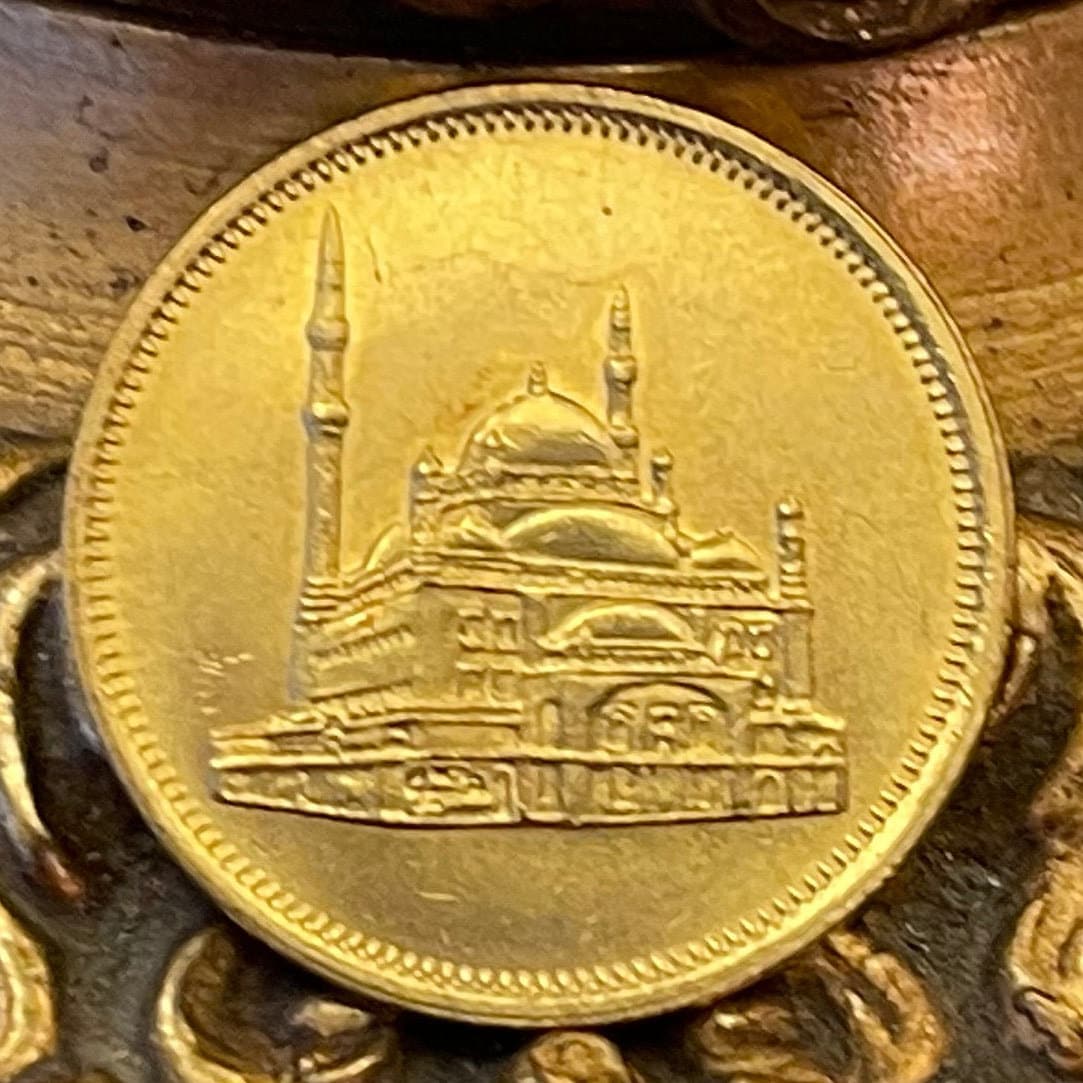elemintalshop
Alabaster Mosque at Saladin Citadel 10 Qirsh Egypt Authentic Coin Money for Jewelry (Great Mosque of Muhammad Ali Pasha) (Citadel of Cairo)
Alabaster Mosque at Saladin Citadel 10 Qirsh Egypt Authentic Coin Money for Jewelry (Great Mosque of Muhammad Ali Pasha) (Citadel of Cairo)
Couldn't load pickup availability
Alabaster Mosque at Saladin Citadel 10 Qirsh Egypt Authentic Coin Money for Jewelry and Craft Making (Great Mosque of Muhammad Ali Pasha) (Citadel of Cairo)
Reverse: Illustration representing the Mosque of Mohammad Ali (Alabaster Mosque) at the Citadel of Saladin
Obverse
Stylized state name, Denomination, year of issue in Hijri and Gregorian calendar years (all in Arabic).
Lettering:
جمهورية مصر العربيه
١٠
قروش
١٤١٣ ١٩٩٢
Translation: Arab Republic of Egypt
10 Qirsh
Features
Issuer Egypt
Period Arab Republic of Egypt (1971-date)
Type Standard circulation coin
Year 1413 (1992)
Calendar Islamic (Hijri)
Value 10 Piastres (0.10 EGP)
Currency Pound (1916-date)
Composition Aluminium-bronze
Weight 4.90 g
Diameter 23.00 mm
Thickness 1.20 mm
Shape Round
Orientation Medal alignment ↑↑
Demonetized Yes
Number N# 1826
References KM# 732, Schön# 425
Wikipedia:
The Great Mosque of Muhammad Ali Pasha or Alabaster Mosque (Arabic: مسجد محمد علي; Turkish: Mehmet Ali Paşa Camii) is a mosque situated in the Citadel of Cairo in Egypt and was commissioned by Muhammad Ali Pasha between 1830 and 1848.
Situated on the summit of the citadel, this Ottoman mosque, the largest to be built in the first half of the 19th century, is, with its animated silhouette and twin minarets, the most visible mosque in Cairo.
The mosque was built in memory of Tusun Pasha, Muhammad Ali's oldest son, who died in 1816.
This mosque, along with the citadel, is one of the landmarks and tourist attractions of Cairo and is one of the first features to be seen when approaching the city from any direction.
The mosque was built on the site of old Mamluk buildings in Cairo's Citadel between 1830 and 1848, although not completed until the reign of Said Pasha in 1857. The architect was Yusuf Boshnak from Istanbul and its model was the Sultan Ahmed Mosque in that city. The ground on which the mosque was erected was built with debris from the earlier buildings of the Citadel.
Muhammad Ali Pasha was buried in a tomb carved from Carrara marble, in the courtyard of the mosque. His body was transferred here from Hosh al-Basha in 1857.
*******
The Citadel of Cairo or Citadel of Saladin (Arabic: قلعة صلاح الدين, romanized: Qalaʿat Salāḥ ad-Dīn) is a medieval Islamic-era fortification in Cairo, Egypt, built by Salah ad-Din (Saladin) and further developed by subsequent Egyptian rulers. It was the seat of government in Egypt and the residence of its rulers for nearly 700 years from the 13th to the 19th centuries. Its location on a promontory of the Mokattam hills near the center of Cairo commands a strategic position overlooking the city and dominating its skyline. At the time of its construction, it was among the most impressive and ambitious military fortification projects of its time. It is now a preserved historic site, including mosques and museums.
In addition to the initial Ayyubid-era construction begun by Saladin in 1176, the Citadel underwent major development during the Mamluk Sultanate that followed, culminating with the construction projects of Sultan al-Nasir Muhammad in the 14th century. In the first half of the 19th century Muhammad Ali Pasha demolished many of the older buildings and built new palaces and monuments all across the site, giving it much of its present form. In the 20th century it was used as a military garrison by the British occupation and then by the Egyptian army until being opened to the public in 1983. In 1976, it was proclaimed by UNESCO as a part of the World Heritage Site Historic Cairo (Islamic Cairo) which was "the new centre of the Islamic world, reaching its golden age in the 14th century."
Share










My girlfriend loved this coin, as well as all the other Egyptian coins. It arrived the same time as all the other ones, so it was well packaged and in good condition also.
Sincerely,
James Patrick Burke
Beautiful product design
Thanks item matched the description
And met my expectations









